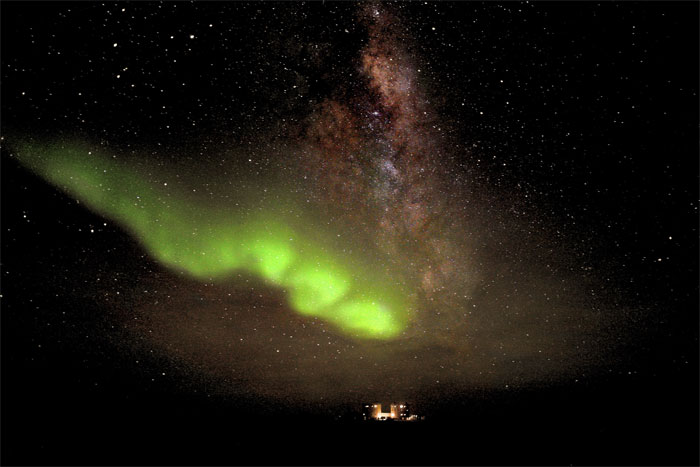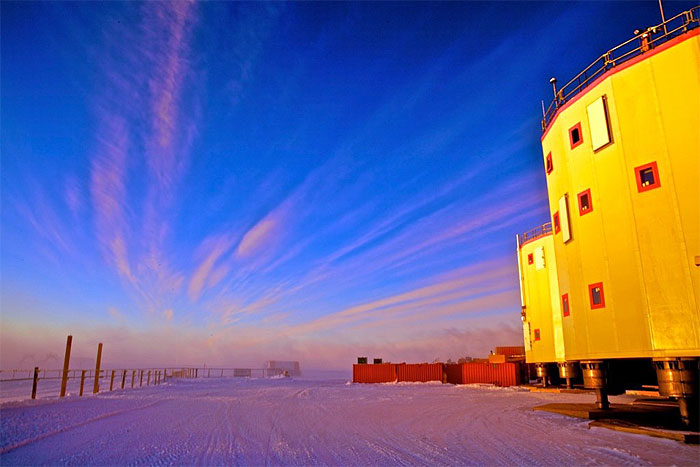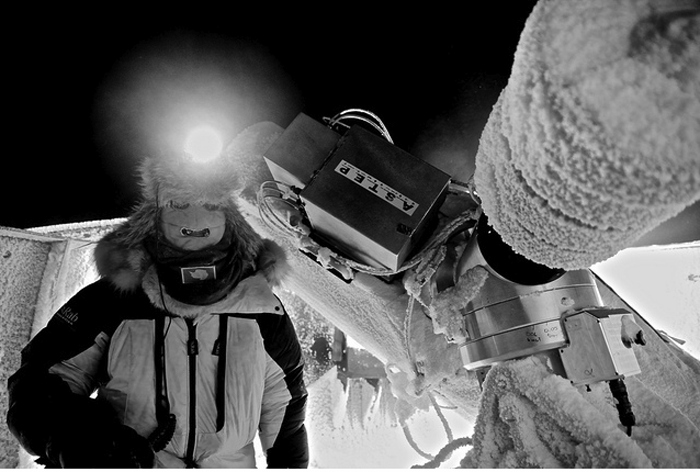-

The aurora australis, or southern lights, snakes across the permanently dark winter skies of the south pole above the Concordia research station. The misty red band of light known as the Milky Way rises high into the sky.
Stars appear slightly smeared due to the rotation of Earth during the exposure of the image.
The image was taken on 18 July 2012 and first published on ESA
-

Research at Concordia station
Concordia is a joint French-Italian inland Antarctic research station run by the French Polar Institute and Italian Antarctic Programme. Every year it hosts a human research protocol coordinated by ESA and Concordia partners, supplied by universities and research institutions from across Europe.
As well as offering around 9 months of complete isolation, Concordia is located at around 3200 metres altitude, so the crew has to adapt to chronic hypobaric hypoxia – they live with a third less oxygen than is available at sea level.
During the Antarctic winter, the crew endures 4 months of complete darkness: the sun disappears from the beginning of May, and is not seen again until late August.
Living in isolation with a European crew of 13 and in the world's most extreme environment creates an ideal opportunity to conduct research into the adaptation of human psychology and physiology.
Space research has been conducted in the polar regions for many years – offering conditions on Earth similar to long-term space travel.
Dr. Alexander Kumar has been living in Concordia since January 2012, the last plane left in February and the crew has been living in isolation since then.
The last rays of Sun were seen in the beginning of May. The crew has remained positive in its outlook and as a team worked through challenges effectively and efficiently.

Extreme astronomy - a step ahead
A Concordia astronomer uses the ASTEP telescope in sub-zero conditions. ASTEP stands for Antarctic Search for Transiting Extrasolar Planets and is but one of the telescopes at Concordia research base in Antarctica.
Situated near the South Pole at 3200 m above sea level, the base receives no sunlight for four months during the winter period and temperatures can drop to –60°C. This makes it an ideal place to study stars and planets, if you are willing to brave the cold.
ESA sponsors a research medical doctor each year to study the effects of living in isolation. The extreme cold, isolation, sensory deprivation and remoteness make living in Concordia similar to living on another planet.
Credits: ESA/IPEV/PNRA - A. Kumar
-
5793 Views
